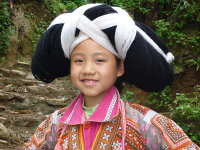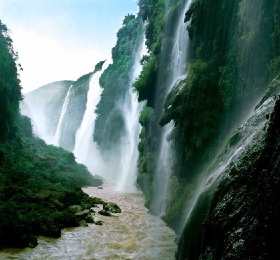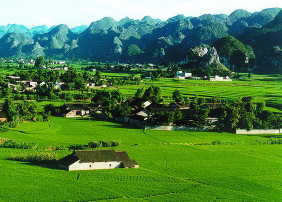Liupanshui attractions

-
City Name:Liupanshui (Chinese: 六盘水, Pinyin:liupanshui)
-
Population :2,830,000
-
Area :9,926 sq km (3832 sq mi)
-
Overview:Liupanshui is the second largest city in Guizhou. The city was founded in 1978 as a prefecture-level municipality.
Panxian Great Cavern
Lupanshui is made up of three counties, Luzhi, Panxian and Shuicheng. In Panxian is a Great Cavern thought to be the earliest human settlement in the province. An excavation there in 1992 sent ripples of excitement through the world's paleoanthropoligical circles, and sparked off major research into early human existence in southern China.
The cavern is also the world's largest early human dwelling site. Five human teeth that were found there link the evolution of man from Homo erectus to Homo sapiens. A stone shaping technique, called the Levallois technique, was also detected in the making of stone tools in the cavern and found to be the first time the technique had been used in Asia.
Another famous grotto called Biyun (Blue Cloud) lies south of Panxian's county seat. Its upper part, the Heavenly Cave, is about half way up the mountainside. The lower part, Earthly Cave, lies at the foot of the mountain. Rays of sunlight beam down from the Heavenly Cave to the Earthly Cave, bouncing off the limestone walls as they fall.
Jiucaiping
Standing 2,900 meters tall, Wumeng Mountain's Jiucaiping (chive peak)is the highest point of Guizhou. It is so called because it is covered in a sea of wild chives.
Hundreds of millions of years ago, the entire area lay eneath a tranquil sea. Volcanic eruptions and crustal movements caused land to appear around 300 million years ago, and it underwent further transformations as the years passed. Different layers of soil have different colors, ranging from brownish to greenish gray, and russet to oyster clay.
The vegetation changes as the altitude rises. There are evergreens, coniferous forests, broadleaved forests and submontane brushwood. And covering the top 100 meters of the mountain is a chive prairie. Wild chives grow taller than most grasses, and fill the air with a strong aroma. The white stone forest, made up of large rock clusters, is another beautiful site on the mountain.
Beipan River Canyon
The Beipan River, downstream from the Kula and Kedu rivers, flows through the counties of Shuichen and Luzhi, and stretches for 100 kilometers. It crosses mountains, forests and limestone caves, and also passes historical sites including the ruins of Yelang city, ancient murals, old bridges and cliff carvings.
The water runs strongest at the sections near Faer and Fadu. Flanked by cloud-kissing cliffs, the water gushes first to the east, then to the south, with sharp twists and turns. Spanning it are a few well-preserved chain bridges that date back to the Qing Dynasty.
The mountains on the riverbanks are home to 849 wildlife species. Among them are the endangered Black Leaf Monkey (Presbytis Francoisi), and dozens of animals under grade II state protection, including the Tibetan Stump-tailed Macaque (Macaca thibetana), and the Rhesus Macaque (Macaca mulatta).
Must-see Villages in Guizhou and Guangxi
Basha Zhaoxing Tang'An Xijiang Sanjiang Longsheng
Frequently asked questions in Guizhou




